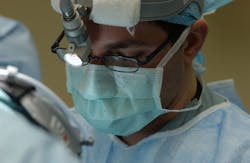Affirming the benefits of fetal surgery for spina bifida, new findings show prenatal repair of the spinal column confers physical gains that extend into childhood. The findings were published today in JAMA Pediatrics, according to a news release from UPMC.
As a follow up to the landmark 2011 Management of Myelomeningocele Study (MOMS), researchers found that children who underwent fetal surgery for myelomeningocele – the most severe form of spina bifida – were more likely than those who received postnatal repair to walk independently, go up and down stairs, and perform self-care tasks such as grooming. They also had stronger leg muscles and walked faster than children who had spina bifida surgery after birth.
Myelomeningocele is a birth defect in which the spinal cord and nerves are exposed because the overlying tissues do not form properly during pregnancy. It affects around 1,500 newborns each year in the United States. Left untreated, the condition causes moderate-to-severe physical disabilities.
Of the 183 families enrolled in the original MOMS trial,154 children participated in a physical assessment of motor function, self-care, and recreational skills as part of MOMS2 when they were 5 to 10 years old. Parents of the children were asked about physical skills, such as being able to sit upright independently and, for those who could walk, being able to perform skills like jumping, walking up and down stairs, and standing on one foot.

